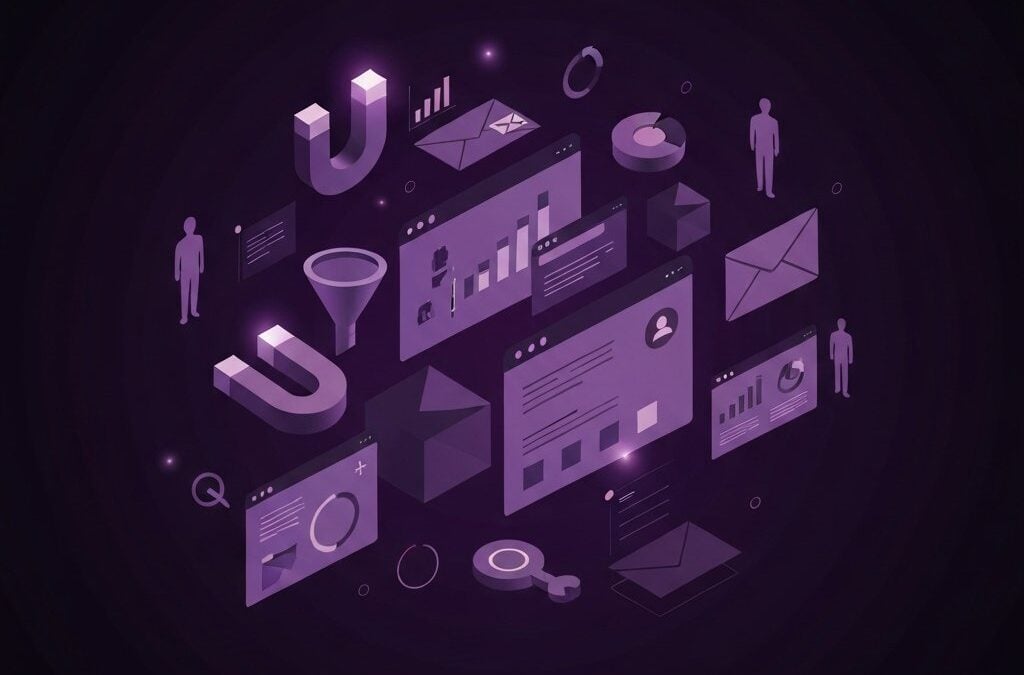Introduction
Artificial intelligence is changing the advertising game as we know it. Advertisers worldwide are harnessing the power of AI to expand the reach of their campaigns. AI helps identify the right audience, optimize ad placement, and maximize return on investment. In today’s fast-paced digital marketplace, a well-crafted AI strategy is a tough nut to crack, but its benefits are ten a penny. By leveraging AI, marketers enjoy more precise targeting and enhanced personalization. This article takes you step-by-step through the strategies and tools that make AI an indispensable ally in driving ad reach. You will find handy tips, real-life case examples, and detailed explanations that blend theory with practice. As you read on, you will learn how to implement these strategies effectively, regardless of your industry or ad platform. Check out our other posts on advertising innovations on our Promarkia Blog.
Understanding AI in Advertising
Artificial intelligence in advertising involves using algorithms and predictive models to analyze large data sets. These tools help marketers understand complex user behaviors and trends. AI is not just about automation; it plays a pivotal role in decision-making. With AI, advertisers can separate the signal from the noise. The models sift through massive data, identifying relevant signals that humans might overlook. For instance, AI-powered platforms can compare the conversion rates of various ad placements in mere minutes. This responsiveness is a major advantage over traditional methods that depend on manual calculations.
Incorporating AI into ad strategies can lead to a measurable increase in engagement and ROI. According to WebFX, advertisers have seen improvements up to 30% higher conversion rates when using AI-driven methods. Further, AI allows for dynamic adjustments in real time, which is essential in today’s fluctuating market. The importance of AI in this context cannot be overstated because it enhances personalization, optimizes audience segmentation, and fine-tunes ad placements based on data insights.
Key AI Strategies for Maximizing Ad Reach
1. Leverage AI Tools for Ad Placement
One of the most exciting approaches in modern advertising is the use of AI tools for ad placement. These tools analyze multiple factors such as user behavior, time of day, and device usage patterns. They help identify the optimal placements where ads achieve maximum visibility. Advertisers can easily set up campaigns with algorithms that recommend the best performing channels and placements. The result is an optimized ad campaign that reaches audiences in the right context at the right time.
AI-driven placement tools provide insights that lead to more efficient budgeting. They help in predicting which ad placements will result in higher engagement levels. For instance, a recent study by Topkee shows that campaigns using AI tools have witnessed reduced customer acquisition costs by up to 25%. This technology not only manages bid strategies automatically but also optimizes overall campaign performance. The systems work round the clock, constantly learning which ad spots are performing best, thereby freeing marketers to focus on creative and strategic tasks.
2. Enhance Personalization with AI
Personalization is the name of the game when it comes to digital advertising, and AI truly shines in this arena. AI algorithms assess user data to understand preferences and behaviors. This information is then used to craft personalized ad experiences. Marketers now direct ads based on location, previous interactions, and even time-specific needs. In other words, AI helps create ads that not only speak to individuals but also resonate with them on a deeper level.
By using techniques like segmentation and machine learning, personalized advertising can drive engagement exponentially higher. Consider how streaming services deploy recommendation engines; the same idea applies to advertising. AI-driven platforms compare customer profiles against ad content, ensuring that every ad is absolutely relevant. Numerous businesses have reported enhanced click-through rates and improved customer loyalty as a result. When ads reflect a customer’s unique preferences, the feeling of connection increases, leading to higher conversion rates and a more enthusiastic audience.
3. Optimize Ad Content with AI Insights
Optimizing ad content is a critical component in maximizing reach and engagement. AI can streamline this process by analyzing which words, colors, and layouts perform best. Marketers leverage predictive analytics to tailor headlines, adjust images, and even recommend ad formats that are more likely to succeed. The process involves sifting through historical data, performing A/B tests, and fine-tuning creative elements based on real-time user feedback. This feedback loop is essential for staying ahead in the competitive ad space.
For example, AI can suggest subtle changes such as a tweak in the call-to-action or the use of a more compelling image. These changes, though minor, can significantly influence a campaign’s success. Tools like Google’s Smart Bidding and Demand Gen utilize deep learning to analyze trends and forecast the likelihood of ad success. In practice, these tools help advertisers refine their messaging continuously, ensuring that ad campaigns remain fresh and engaging for the target audience.
4. Dynamic Audience Targeting with AI
Audience targeting is a key element of any successful advertising campaign. AI empowers marketers to conduct deep segmentation of audiences and subsequently target specific groups with tailored ads. These dynamic models can adapt to real-time changes like shifts in user activity patterns. Unlike traditional methods that segment audiences by broad categories, AI-driven targeting drills down to micro-segments. It identifies clusters based on purchase history, online behavior, and even social media interactions.
Dynamic audience targeting means that campaigns are optimized to reach the most promising segments. This thorough segmentation leads to a higher conversion rate because ads are more relevant. Advertisers can monitor campaign performance in real time, making prompt adjustments. Moreover, machine learning algorithms work on a continuous basis, ensuring that targeting remains effective. A recent report by Camphouse confirms that campaigns using dynamic targeting see a noticeable boost in ROI. The blend of precision and agile adjustments makes AI-powered targeting a vital component for marketers aiming to maximize ad reach.
Enhancing Ad Engagement Through Predictive Analytics
Predictive analytics is transforming how marketers approach ad engagement. By forecasting customer behaviors, these AI technologies allow advertisers to anticipate trends before they occur. They determine what type of content or ad format will be most effective, based on a meticulous analysis of historical data and real-time trends. Marketers then adjust their strategies, catering to the predicted behavior accurately.
This process involves gathering data from various touchpoints such as social media, browsing behavior, search patterns, and even purchase histories. AI algorithms generate models that simulate potential outcomes, essentially serving as a crystal ball that guides advertising investments. With clear insights and actionable forecasts, advertisers can decide which creative assets to invest in and how to best allocate their budget, enhancing campaign planning and performance.
Measuring and Adapting AI Strategies
For any advertising strategy to be successful, performance measurement is crucial. Advanced analytics tools powered by AI assess various metrics like click-through rates, impressions, conversions, and ROI. Customizable dashboards display these metrics in a digestible format, highlighting what works and what doesn’t.
Continuous monitoring allows advertisers to pivot strategies on the fly. Tools such as Google Analytics, integrated with AI platforms, enable rapid comparison of current campaign data with historical performance. This ongoing evaluation ensures timely adjustments, making sure every campaign remains on track. As the digital landscape evolves, so too must campaign strategies to sustain high performance and engagement.
Leveraging Data-Driven Creative Optimization
Data-driven creative optimization is a game-changer in advertising. AI not only automates processes but fine-tunes creative strategies to enhance ad performance. By analyzing various design elements—such as visuals, headlines, and overall tone—AI helps select creative components that resonate most with the target audience.
This approach merges creativity with data, enabling faster content testing and optimized resource allocation towards higher-performing creatives. A/B tests powered by AI reveal which visuals or messages perform better among targeted demographics, leading to improved engagement. The result is a campaign that is innovative, continuously refined, and highly effective.
Comparison Table: Traditional vs. AI-Driven Advertising
| Feature | Traditional Advertising | AI-Driven Advertising |
|---|---|---|
| Data Analysis | Manual and time-consuming | Automated and real-time |
| Targeting Precision | Broad demographic segmentation | Micro-segmentation for enhanced accuracy |
| Creative Optimization | Based on intuition and limited data | Data-driven with continuous feedback |
| Campaign Adaptability | Slow reaction to changes | Instantaneous adjustments and predictions |
| Budget Efficiency | Often less optimized | Optimized spending through dynamic bidding |
Real-World Examples and Case Studies
Real-world applications consistently underline how AI maximizes ad reach. An online retailer integrated AI into its ad campaigns and witnessed a 35% uplift in click-through rates, while a streaming service experienced a 25% increase in subscriptions through AI-driven personalization. These examples demonstrate AI’s ability to analyze user interactions across platforms, optimize ad placements dynamically, and fine-tune strategies in real time.
Implementing AI Strategies: A Practical Guide
For advertisers new to AI, starting can feel overwhelming. However, a gradual approach can yield excellent results:
- Begin with Data Collection: Gather user data from various touchpoints.
- Use AI Tools for Analysis: Leverage platforms that integrate AI modules with traditional analytics tools.
- Experiment with Ad Placements: Test different placements and formats in smaller campaigns.
- Personalize Your Ads: Utilize AI to tailor content based on audience segments.
- Monitor Performance: Continuously evaluate and adjust based on real-time insights.
- Scale Successful Campaigns: Expand your budget once a winning formula is identified.
Trends Shaping the Future of AI in Advertising
Emerging technologies will continue to revolutionize digital advertising. Developments in natural language processing, AI-powered chatbots, and augmented reality are already paving the way for immersive, personalized ad experiences. The innovations in AI not only enhance current campaigns but also lay the groundwork for the future of advertising.
Conclusion: Embrace the Future with AI Strategies
AI is revolutionizing how ads are placed, targeted, and optimized. By leveraging advanced analytics and dynamic creative optimization, advertisers can achieve levels of precision that traditional methods simply cannot match. Embracing AI means supplementing human creativity with data-driven insights, ensuring more effective ad strategies and sustainable growth. As the digital landscape evolves, continuous monitoring and agile adjustments remain key. For more insights and tips, visit QuickCreator and explore additional resources online.
Discover further innovative techniques and practical guidance from industry leaders by checking out resources such as Zappi.



